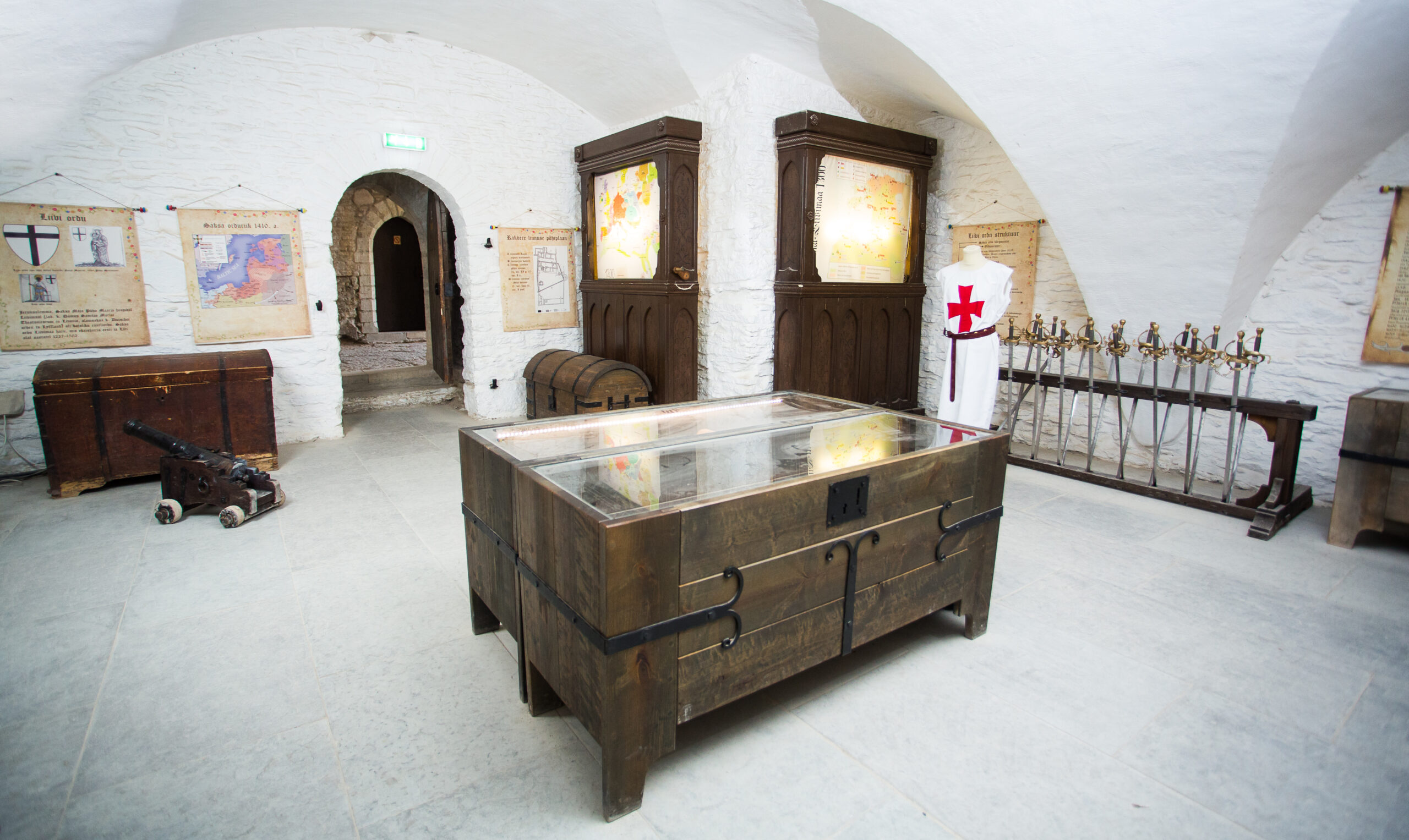History room
The history room gives the visitors an opportunity to hear about the castle’s history – about which countries have governed it and about who have built and wrecked it.
The historical approach to the castle is supported by an exhibition of archaeological finds, which include artefacts connected to the castle – weapons, tableware, tools, fragments of buildings, etc. Appropriate security and storage conditions have been met for the exhibited items. Visitors can become acquainted to the broader background of the castle’s development by studying the card boxes with scrollable cards. The first box contains information on the national formation of Europe in the 13th to 18th century, and the second box gives an overview of the national development of the Estonian region in the 13th to 15th century and its passing from hand to hand, as the result of the Livonian War, in the 16th and 17th century. Visitors can try on knights’ helmets, mercenaries’ morions, and plate armour details and take pictures with a night of the order and a mercenary (landsknecht).
